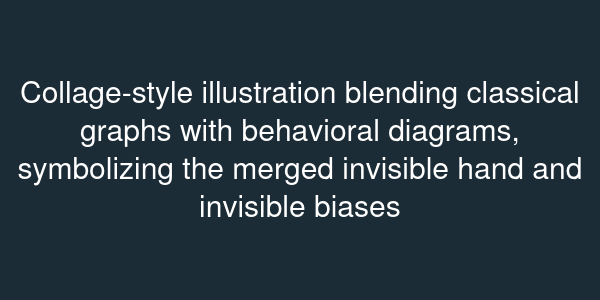Conclusion: Rewriting the Handbook
Essential Questions
- How do classical and behavioral insights complement each other?
- What themes connect biases, social preferences, and strategic behavior?
- Where is behavioral economics heading next?
Overview
You have journeyed from Adam Smith's marketplace to modern behavioral labs. Along the way, you saw how rational choice, expected utility, and market efficiency provide a clean baseline, while loss aversion, time inconsistency, and fairness enrich the picture. This conclusion ties the threads together and looks forward.
Reuniting Invisible Forces
Classical economics offers equilibrium tools: solve , set marginal benefits equal to costs, and derive market-clearing prices. Behavioral economics adjusts the inputs—value functions with kinks, discount factors with present bias, and utility terms for fairness. Together they produce more accurate predictions.
Consider retirement savings. The classical model suggests automatic optimization: choose contributions where marginal utility today equals discounted utility tomorrow. Behavioral insights add commitment devices, defaults, and reminders. The combined framework yields policies like auto-enrollment with choice and education.

Themes Across Units
Several themes cut across the curriculum. Reference points matter because they define gains and losses, explaining loss aversion, endowment effects, and framing. Time and risk carry psychological layers; hyperbolic discounting and probability weighting reshape classic formulas that assumed exponential patience and linear probability. Social context counts, as reciprocity, social preferences, and nudges reveal that decisions emerge within communities rather than in isolation. Strategic behavior evolves when players have limited depth of reasoning, so level-k thinking and behavioral equilibria help you predict outcomes that Nash equilibrium alone misses.
Looking Ahead
Behavioral economics is expanding into machine learning, health, and environmental policy. Researchers test digital nudges, personalized defaults, and AI-generated choice architectures. Data science enables real-time experimentation, but ethical considerations—privacy, autonomy, transparency—grow in importance.
As you continue your study, treat the invisible handbook as a living document. Challenge assumptions, measure behaviors, and build systems that respect both rational incentives and human psychology. The invisible hand still guides markets, but now you can see the invisible biases steering alongside.